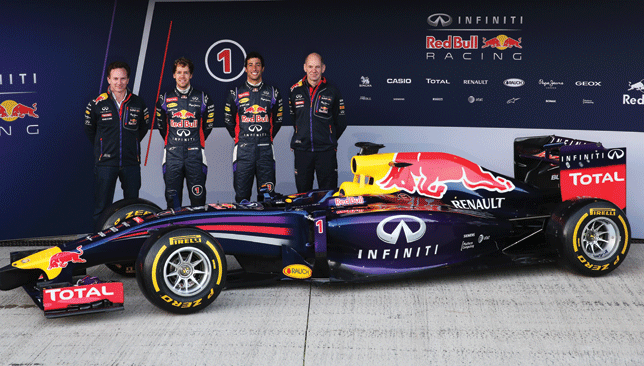
Adrian Newey has expressed his concerns over the dangers relating to Formula One’s newest cars.
Red Bull’s chief technical officer, the creative genius behind the team’s run of four consecutive drivers’ and constructors’ titles, has highlighted two key areas of worry.
The first relates to the new noses, which have altered dramatically to accommodate regulations designed to ensure that in the case of an accident the cars don’t become airborne. That was the case in the European Grand Prix in Valencia in 2010 when former Red Bull star Mark Webber crashed into the back of Heikki Kohis valainen and somersaulted through the air.
The problem regarding the noses centres around the fact there is a discrepancy between the rules regarding the chassis height and that relating to the nose. It has resulted in a plethora of different designs, not all of them for the better, but with suggestions they could now plough underneath a car in front.
Highlighting the issues of the current shapes, Newey said: “It’s a shame regulations create ugly solutions having seen some of the cars that have been released. Obviously, the shape and sound of the cars is part of the drama that is Formula One, and it’s a shame if the car is unattractive.”
As to the nose now being lower than the rear crash structure, Newey added: “The regulation has been introduced following some research by the FIA. It suggests the lower nose height reduces the chances of the car being launched, such as the accident Mark had a few years ago.
“I must admit I am concerned the opposite may happen, that cars submarine effectively. If you hit the back of the car square on then you go underneath it, and you end up with the rear crash structure in your face which is a much worse scenario.
“It’s one, I must admit, that personally I am not in favour of. For me, it’s introduced more dangers than it’s cured.”
Newey’s second gripe surrounds the positioning of the new ERS (energy recovery system) battery, significantly more powerful than the old KERS which stored power under braking and was re-released for a power boost of 6.7secs per lap via the push of a button.
ERS combines two electrical motor generator units, one of which works like KERS, whilst the second harvests waste energy from the exhaust flow, allowing for 30 seconds of additional power.
Previously, Red Bull stored their KERS behind the engine, but it now has to be stored in front of the power train, and more significantly, under the fuel tank.
Given Red Bull’s problems in the past with KERS, Newey fears ERS may add to their grief. He said: “The battery, by regulation, is now in front of the engine and under the fuel tank, which is a shame.
“It was done on safety grounds, but I’m not quite sure why putting a battery under the fuel tank is safer than putting it behind the engine, but that’s where we are.
“As for safety, it’s uncharted territory. These batteries can suffer thermal runaway through impacts, through causes which are difficult to predict.
“Once they go into such a big battery pack then it’s very difficult to control that fire. Frankly, put it in the pitlane and watch it burn.”
Newey has stressed, however, that he does not believe that the drivers are at risk. He said: “I don’t think it’s a driver safety concern because you will know about it (a problem) in a reasonable amount of time, but it’s still a danger.
“Also, the voltages are now very high. Large DC voltages are very dangerous, much more dangerous than AC. For the whole of the pitlane, safety is a big challenge with these cars.”